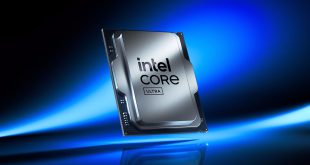Oracle billionaire chief Larry Ellison has recently announced their launch of a new SPARC Supercluster – a lightning fast enterprise computing system that can perform 30 million database transactions per minute.
This figures is 3 times faster than the previous record, held by IBM's DB2 on a P7 cluster. So what hardware is involved to create this insane level of performance? It is a single SPARC Supercluster with 108 SPARC T3 chips, which totals 1,728 processor cores. This system also has 13TB of memory (yes terrabytes), 246TB of flash storage and 1.7 petabytes of total storage capacity. With Larry Ellisons scary bank balance, he might even have on of these at home for browsing the internet.
Outspoken Ellison said that he thought of IBM as a serious, formidable competitor with good products, but he feels that Oracle has just raised the bar with their improvements to Sun's technology, meaning the new SPARC system is well in the lead. He then said that the Supercluster's price to performance ratio was beating IBM by 27 percent.

Hewlett Packard didn't escape his wrath however, saying that their high end products were comparible to a ‘turtle' and highly vulnerable in the market. The Oracle benchmarks show the Supercluster with a 66 percent better price to performance ratio compared with HP. This isn't the first time he has been negative with HP in the press, or even at events.
Oracle acquired the SPARC and Solaris technology when they bought Sun. Ellison has said that Oracle want to be ‘The Apple of the Server World', offering their own focused and tightly integrated hardware and software solutions in a combined package which is easy to manage and support for businesses. Their new ‘Gold Standard Service' should help them achieve this goal.
If you want to analyse some of their benchmark results, you can do so over here.
 KitGuru KitGuru.net – Tech News | Hardware News | Hardware Reviews | IOS | Mobile | Gaming | Graphics Cards
KitGuru KitGuru.net – Tech News | Hardware News | Hardware Reviews | IOS | Mobile | Gaming | Graphics Cards


